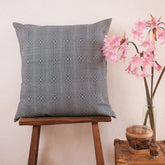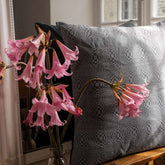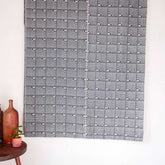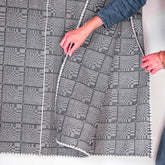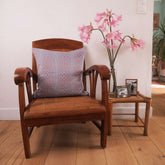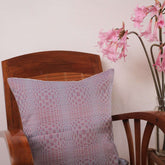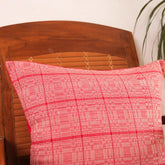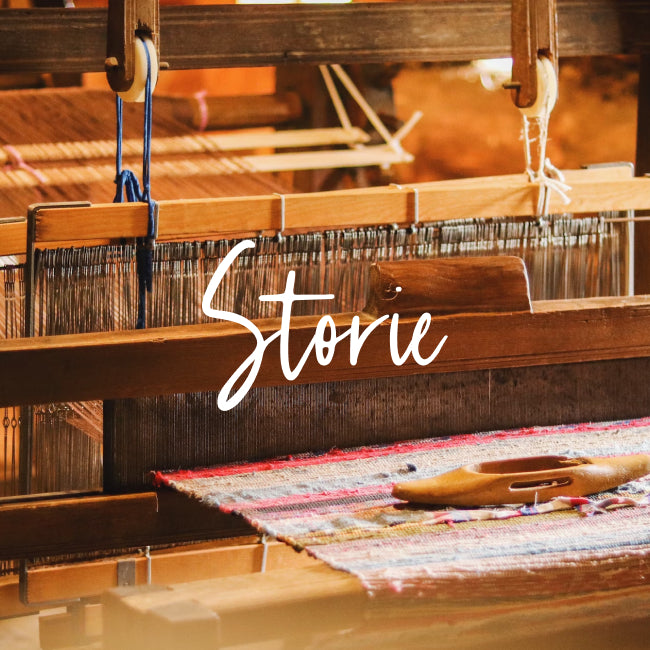CRAFT STORIE 4#Binakol
On a heavy, tropical afternoon, we are led down a dusty pathway between simple houses shaded by mango trees, to the home of an elderly lady, who sleeps in the same room as her weaving loom.
In her home there is a window frame, but no window, a door frame but no door; and when we arrive the woman is having an afternoon nap, hiding from the midday heat. It is very, very hot.

We are in a small village, tucked between the beach and an airstrip, not far from the colonial heritage town of Vigan, in the north of the Philippines. The woman we have come to meet, Catalina Ablog, is one of 3 remaining binakol textile weavers in the region.
Binakol* is the name given to one of the most recognisable patterns of traditional hand weaving in the Philippines, made up of uniform, interlocked geometric patterns.
The work is graphic; in the different designs you can see representations of the waves of the sea, whirlwinds, stars, fans, cat’s pawprints, and the traditional capiz windows found on houses in the Ilocos region.

Some very special pieces are almost psychedelic, with the weaver managing to create circles within squares which move as one looks upon the cloth .The indigenous peoples of the Cordilleras regions believed the binakul cloth could ward off malevolent spirits, by making the evil spirits dizzy.

Today this style of weaving is a dwindling, only a handful of women in the Ilocos region of the northern Philippines are still practicing the craft. Catalina Ablog explains that young people aren’t interested in learning to weave, “only old people like us want to weave, it is just too time consuming.”
She tells us that that setting up a loom will take her about two weeks, and it takes her one day to weave 2 yards (1.8m) of cloth.

Catalina was very friendly, but not particularly enthusiastic about showing us how to weave, we’d come unannounced and uninvited. She reluctantly lifted herself from her bed and crouched on the floor to spin a little cotton thread on the repurposed shell of a biro. She then began to weave. She says she works much slower these days than she when she was younger.
There is a small amount of cloth already woven, but Catalina has nothing to sell us. The Binakul she is working on will be ready in 2 or 3 weeks. Earlier in the day another buyer had been to the village and bought nearly all the cloth there was to buy. We chat for a while, and she lets us film her working, she is an incredibly beautiful woman, but a little camera shy.

We felt very lucky to meet Catalina. Earlier in the day we’d been told that no one in the area was still making the craft, that all the binakol weavers around Vigan had died. Our driver Tony told us it wasn’t true, and that in his village, there were still a couple of women making binakol, we seized the opportunity and headed straight there.
There are still several different communities in the region producing varying styles of binakol weaving, but the craft is at risk of being lost. The local market is flooded, as is often the case, with cheap foreign imported textiles. There is a lack of good local cotton. Cotton was grown in this region, but Spanish colonisers gradually replaced cotton with more the profitable crop of tobacco. The weavers we spoke to said the cotton they use comes from the USA. Young people are not learning the skill, preferring to search for higher paid work in other industries.
There is, however, a movement to defend this craft heritage. One of the advocates is Al M. Valenciano, an artist and designer, who has opened a study centre dedicated to protecting the weaving traditions of the various communities of the northern Philippines:

I asked Al, how these precious crafts can survive challenged by machine made alternatives; his answer can be applied to the protection of craft heritages across the globe “this work should no longer be considered as a simple textile, to compare with industrial textiles, there is no way to meet price and demand, instead, these hand loomed products need to be considered as something exceptional – closer to a piece of art or heritage – which happens to be useful - and if there are the people out there interested enough to buy these unique pieces of textiles then yes, we can survive.”
At his study centre Al has exquisite examples of textiles from across the north of the Philippines, he works with 12 groups of weavers across the country. Sometimes they work on traditional patterns and designs, but the designer also works with the women to evolve and adapt the craft. Playing with colour, and scale - there is no doubting the origin of the work, there are always visible echos / of the original works - but with a modern twist.
Al shows us a stunning extra large binakol throw, with an oversized Whirlpool design in traditional Blue and white. It could be hanging in a collection of Bauhaus weavers, or in a contemporary art gallery. The graphic design is timeless, and if you are familiar with the binakol there is no way to mistake this Philippine hand-looming.

The binakul is an illustration of daily life in abstraction. It’s patterns tell a story in cloth. The lengths of cloth are often joined by cotton embroidery, even these details have their own story, certain stitches symbolize rice, centipedes, hands, waves of the sea, and other images ever present in the Philippines. For centuries this textile has been used by the local communities in the north of the Philippines. It’s strong and durable, and made for daily utilisation. It was adopted by the Spanish colonisers of the Philippines, who adored the whirlpool design of the Binakul and even used it for the sails of their galleons.

Despite it’s beauty, and usability, this weaving technique really is at risk of being lost,: Al tells us that having started the study centre it took him 15 years to get to the point of having the quality of product that he is now selling, “to become a master weaver it takes 15 to 20 years”, so this project is a work in continuous progress, “what is important is preserving this craft, the patterns, we should start owning it as part of our heritage."
The importance of the Binakol lies in the artistry and complexity of the way it is woven but also the value of the craft heritage. This is a story to be told, but also craft culture we can support in order to keep this precious tradition alive.
CLICK HERE TO BUY www.storieshop.com
*Also known as binakel, binakael, or binakol, binakul (meaning “twill” in Ilocano).






